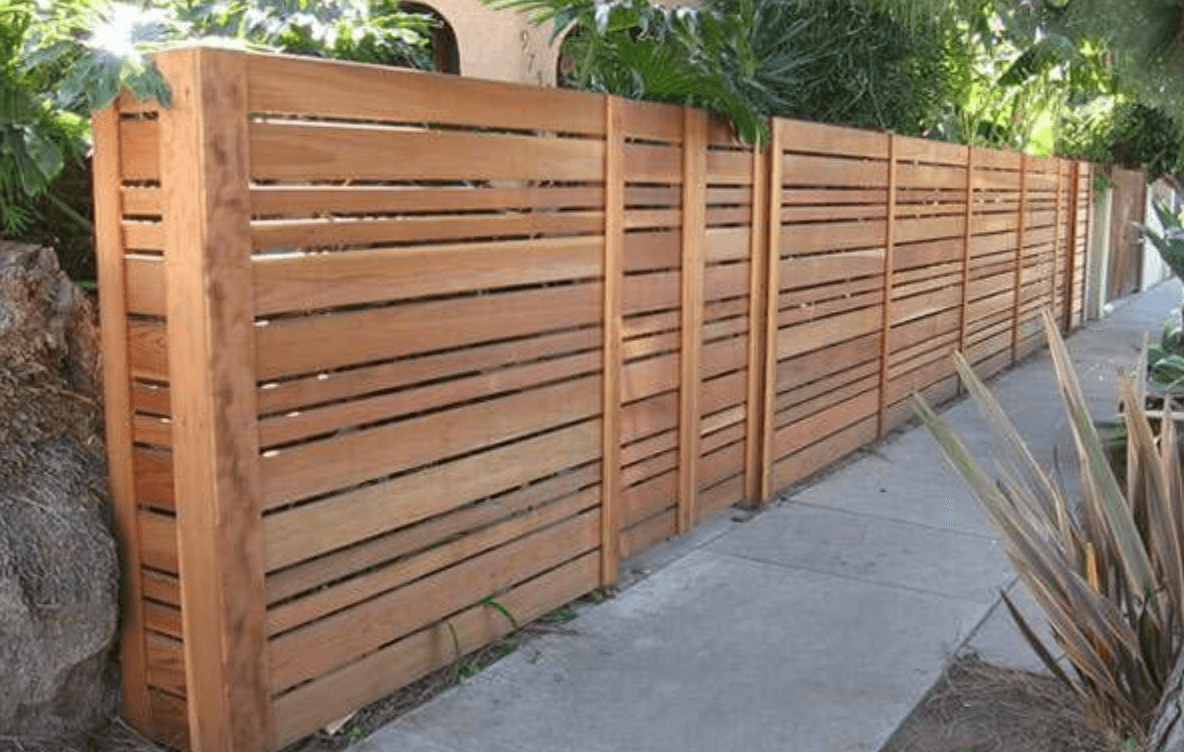All Categories
Featured

Among the most prominent alternatives, timber, plastic, and light weight aluminum each offer special advantages and drawbacks. Here's a malfunction of the pros and disadvantages of these three usual secure fencing products.
Timber Fence. Wood fence has actually been an ageless option for property owners as a result of its natural elegance and flexibility.
Pros:. Visual Allure: Wood uses a traditional and cozy look that complements a range of building designs. Customizable: It can be painted, tarnished, or cut right into distinct layouts to suit individual preferences. Economical: At first, wood fencing can be a cost effective alternative contrasted to other products. Eco-Friendly: Timber is an eco-friendly resource and can be sustainably sourced. Cons:. High Maintenance: Wood requires regular sealing, discoloration, or paint to prevent rot, insect damage, and weathering. Longevity Issues: Without appropriate treatment, wood can warp, fracture, or decay over time, especially in locations with high moisture. Much shorter Lifespan: A wood fence normally lasts 10-20 years, relying on the type of wood and degree of upkeep. Timber is optimal for those who value a traditional look and agree to dedicate to its maintenance.
Vinyl Secure Fencing. Plastic is a modern, low-maintenance secure fencing alternative that has grown in popularity over the last few years.

Pros:. Reduced Maintenance: Plastic does not require paint, discoloration, or sealing and can be conveniently cleaned with soap and water. Weather condition Resistant: It withstands harsh climate conditions without deteriorating, rusting, or warping. Long-Lasting: Vinyl fencings can last 20-30 years with minimal upkeep. Selection of Styles: Offered in several shades, designs, and structures, some plastic alternatives imitate the look of timber. Cons:. Greater Upfront Expense: Vinyl secure fencing can be more costly initially compared to wood. Brittleness in Winter: In extreme cold, plastic might split or come to be fragile. Restricted Fixes: Individual panels can be challenging to replace, requiring mindful matching to the existing fencing. Plastic is finest fit for home owners seeking a sturdy, low-maintenance service with modern looks.
Aluminum Fencing. Aluminum secure fencing is a long lasting and light-weight option, frequently selected for its modern appearance and flexibility.
Pros:. Rust-Resistant: Light weight aluminum doesn't corrosion, making it an outstanding selection for humid or wet environments. Reduced Maintenance: Calls for marginal upkeep and is very easy to clean. Sturdy: While light-weight, light weight aluminum is strong sufficient to endure many environmental conditions. Long Life-span: Can last a number of decades without substantial wear or damage. Range of Styles: Uses a streamlined and sophisticated appearance, usually utilized for decorative or decorative functions. Cons:. Higher Cost: The first financial investment for aluminum fence is greater than timber or vinyl. Less Privacy: Light weight aluminum fencings are typically made with open pickets, making them less effective for privacy. Vulnerable to Damages: Although durable, light weight aluminum can be nicked by strong effects. Aluminum is excellent for those seeking a fashionable, long-lasting alternative that requires very little care.
Making the Right Option. Each secure fencing product-- light weight aluminum, wood, and plastic-- provides distinct benefits and negative aspects. Your decision ought to depend upon your specific concerns, such as spending plan, maintenance choices, climate, and visual objectives:
Choose wood if you enjoy a standard look and don't mind routine upkeep. Choose for plastic if you desire a low-maintenance, weather-resistant fence with modern charm. Go with aluminum if you prioritize toughness, corrosion resistance, and a streamlined design. By weighing these pros and disadvantages, you can choose a fencing material that improves your home while meeting your useful needs.
Latest Posts
Reputable Industrial Roof Covering Services by Weathercraft
Published May 25, 25
1 min read
Uncover the Best Auto Repair Coupons in Montclare, Chicago
Published May 23, 25
1 min read
How to Know When Your Car Needs Skilled Car Repair at Montclare Auto Repair
Published May 23, 25
1 min read